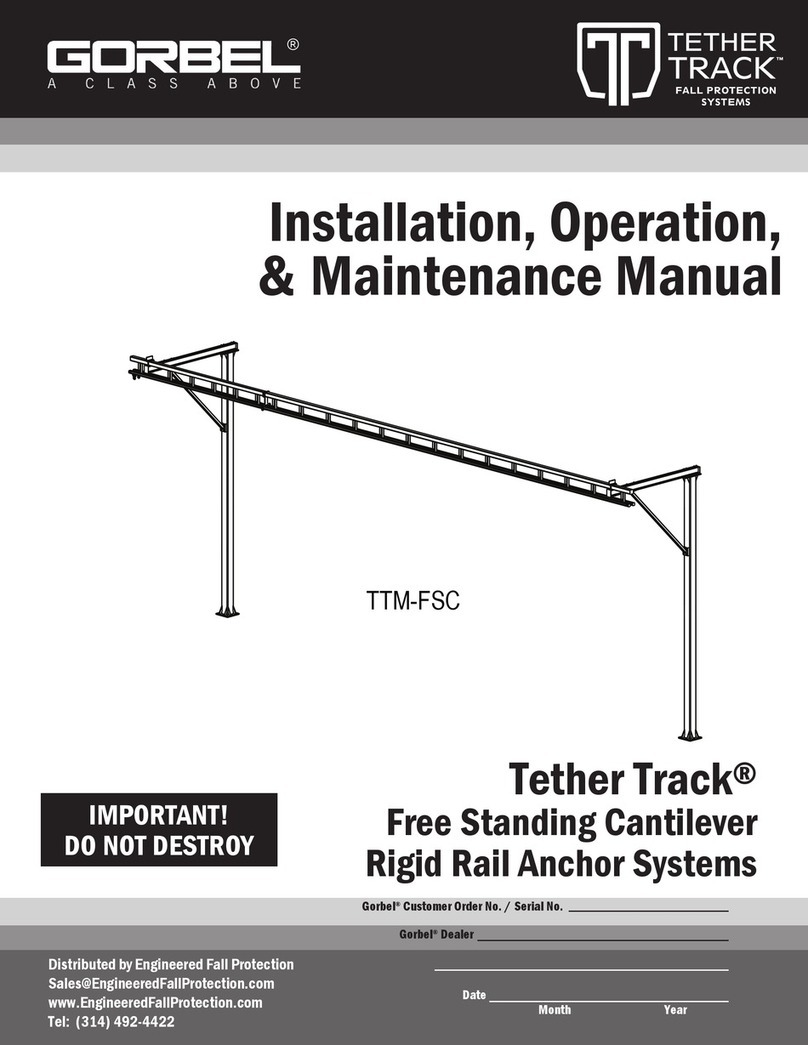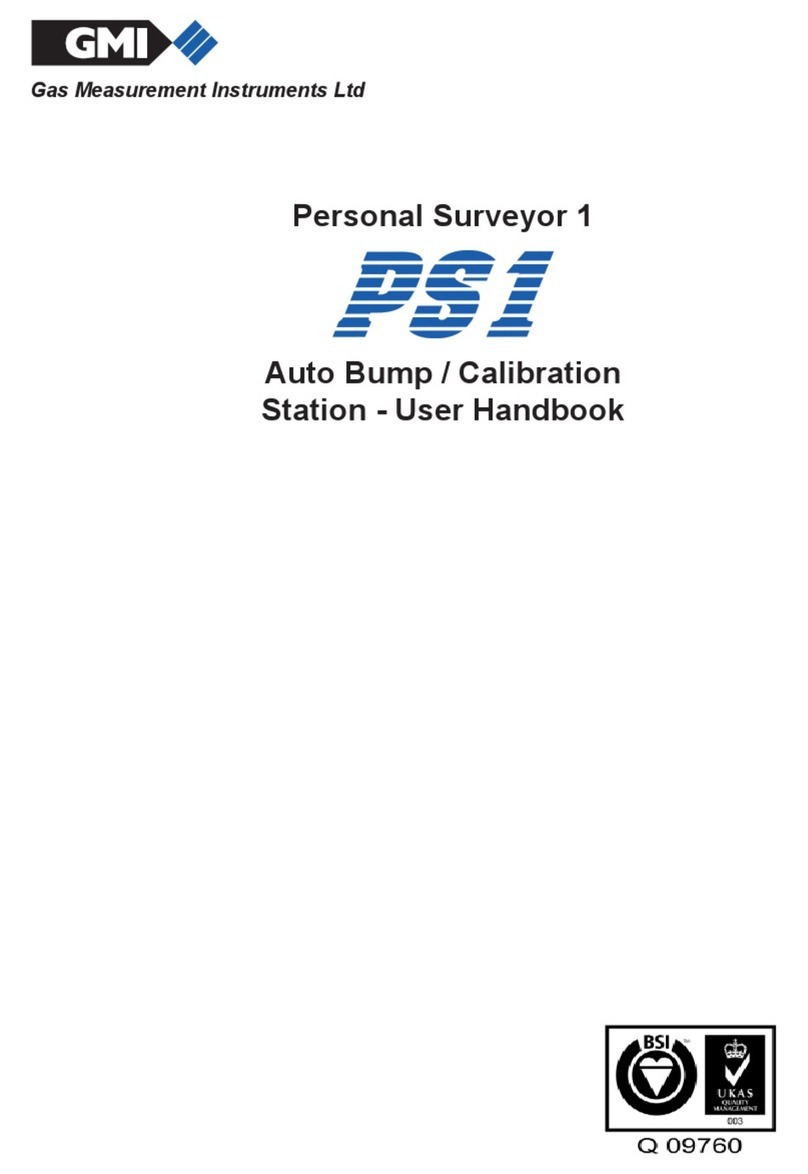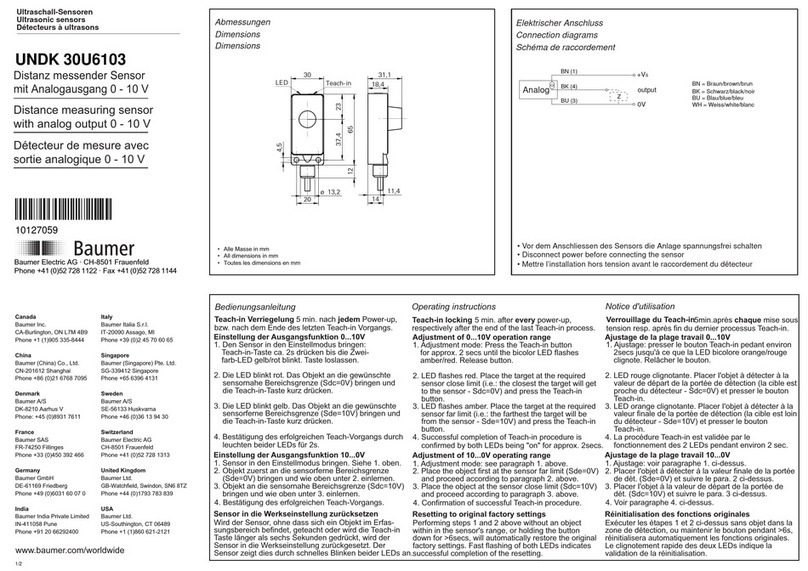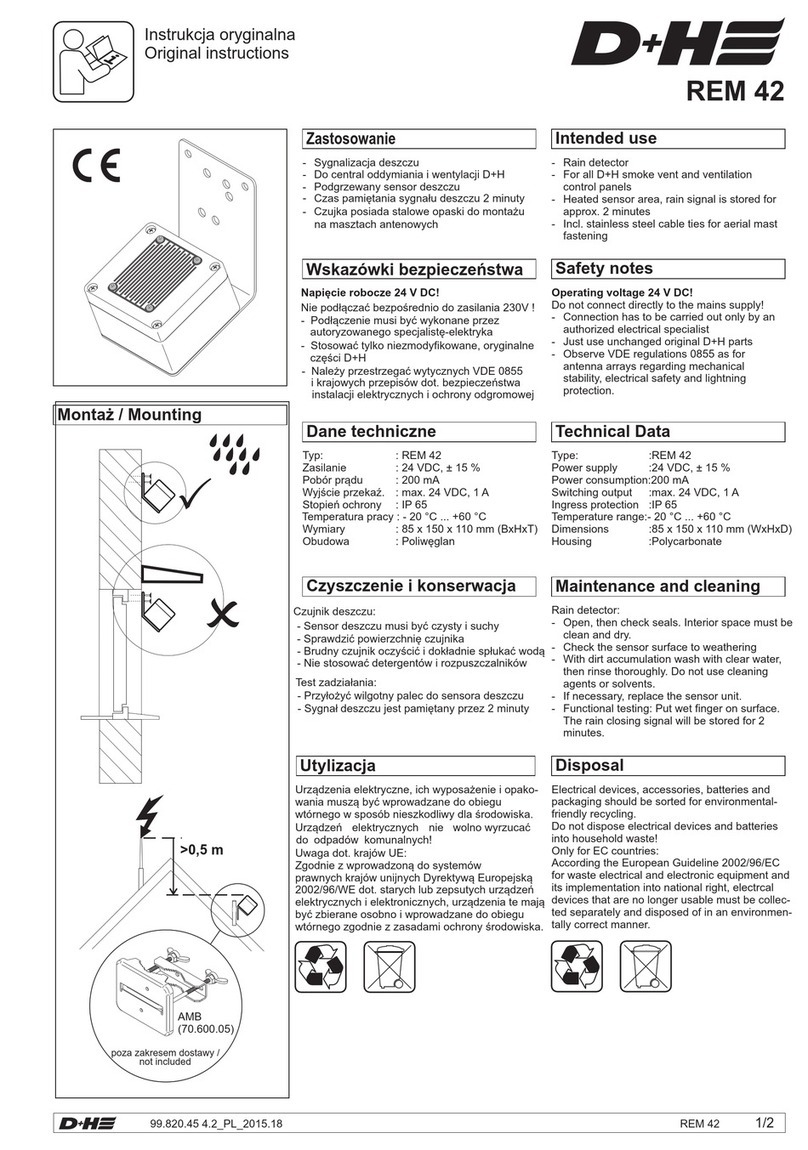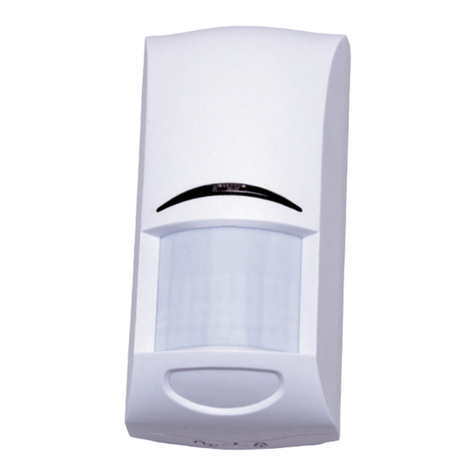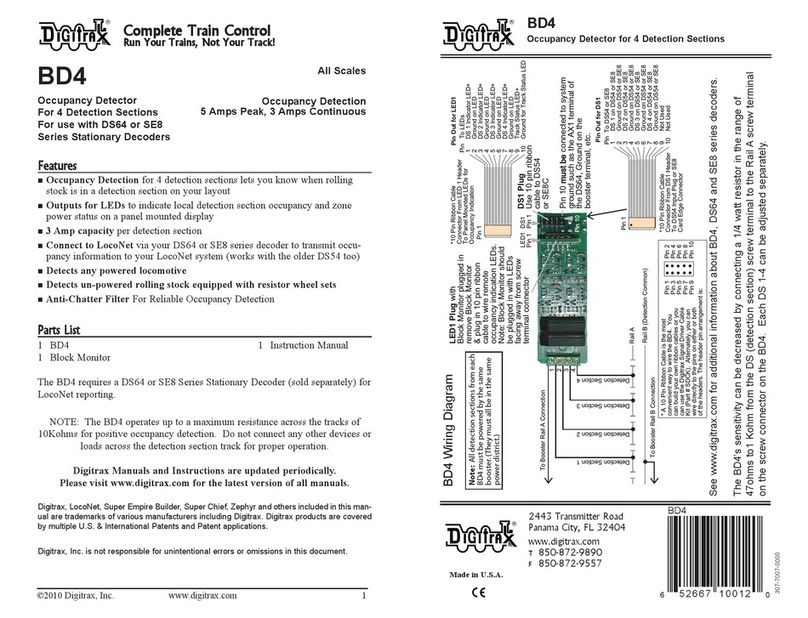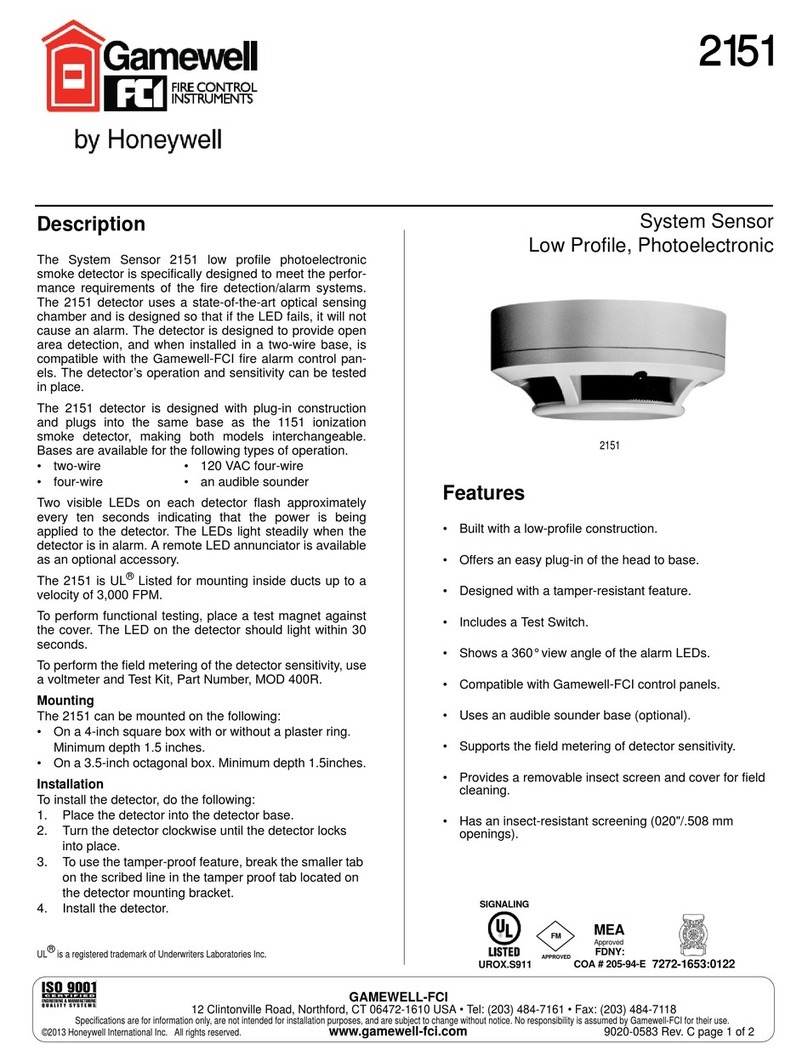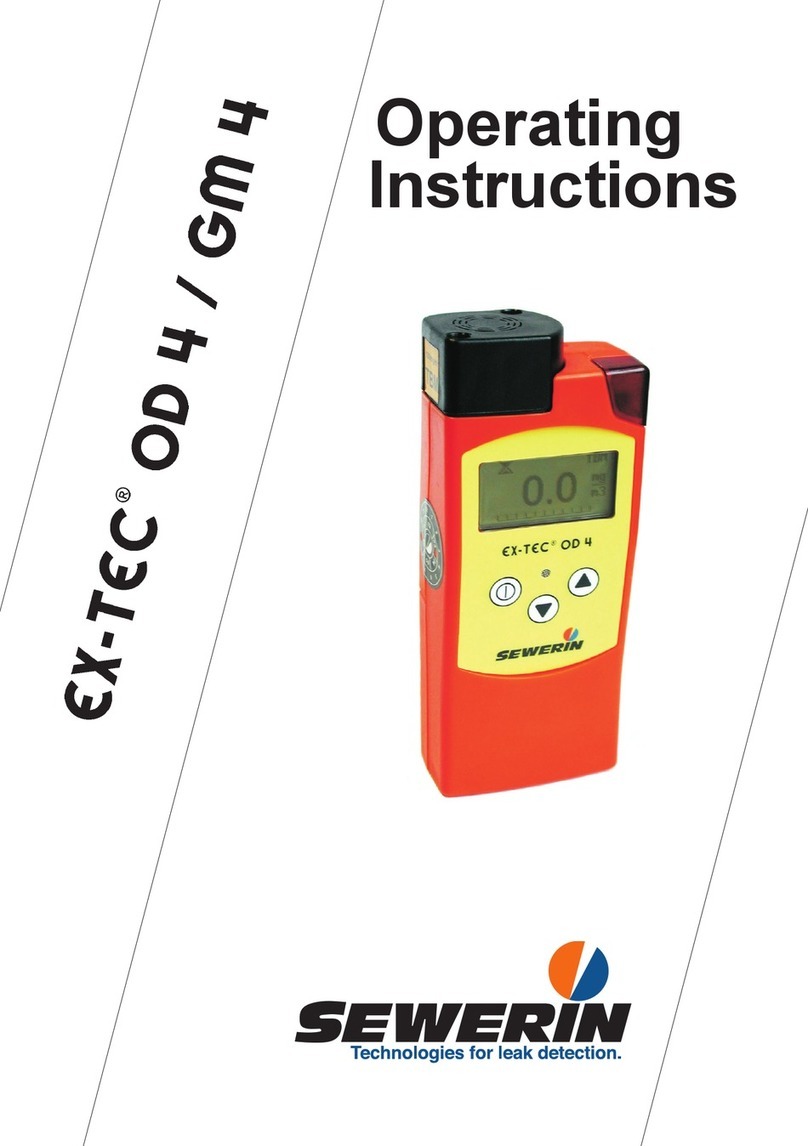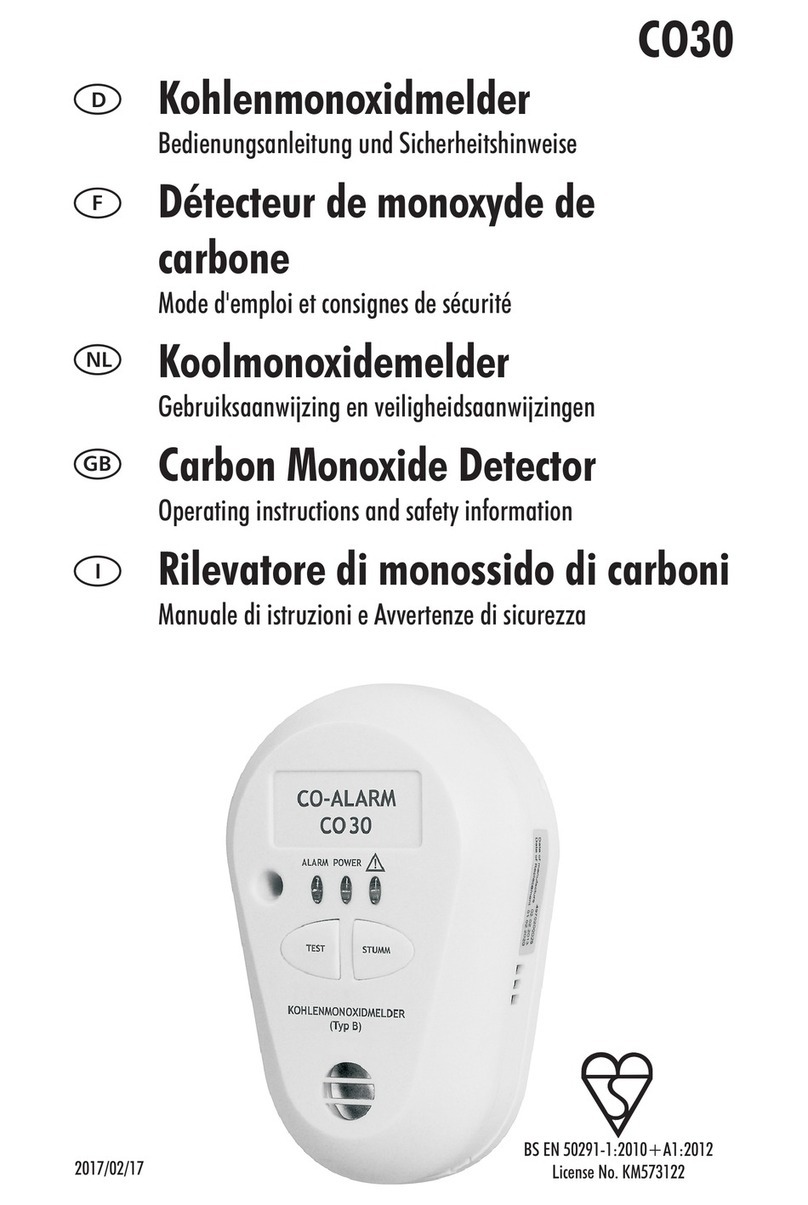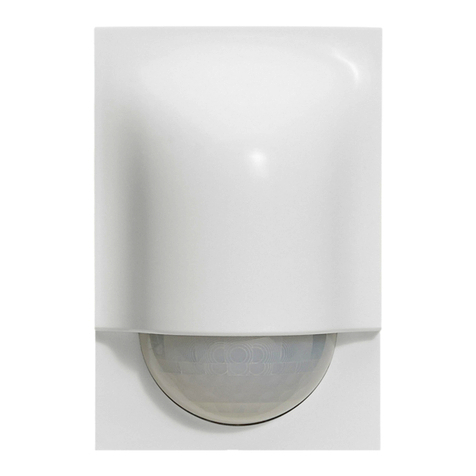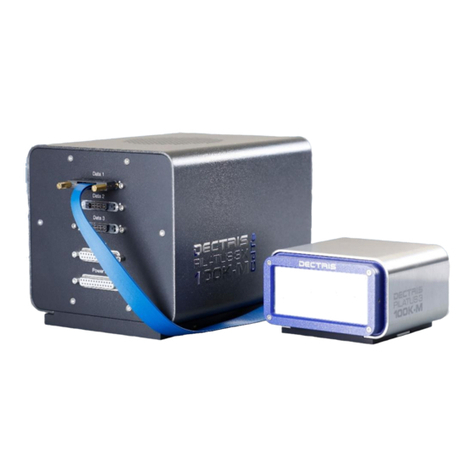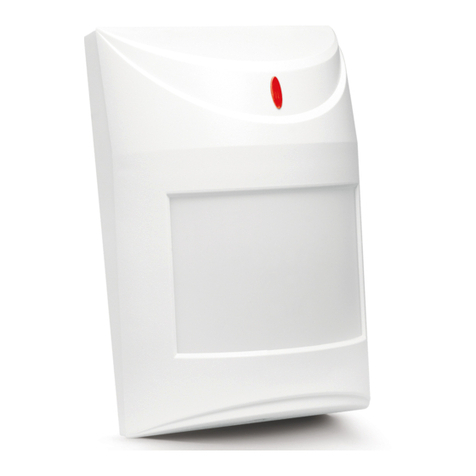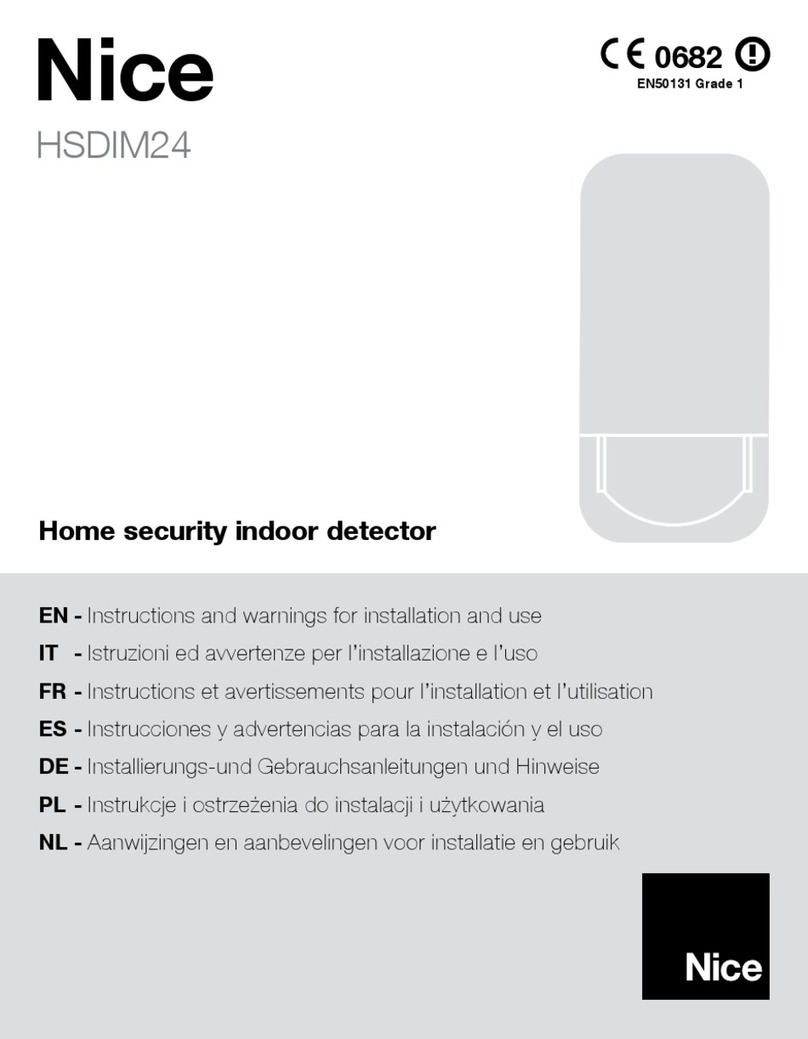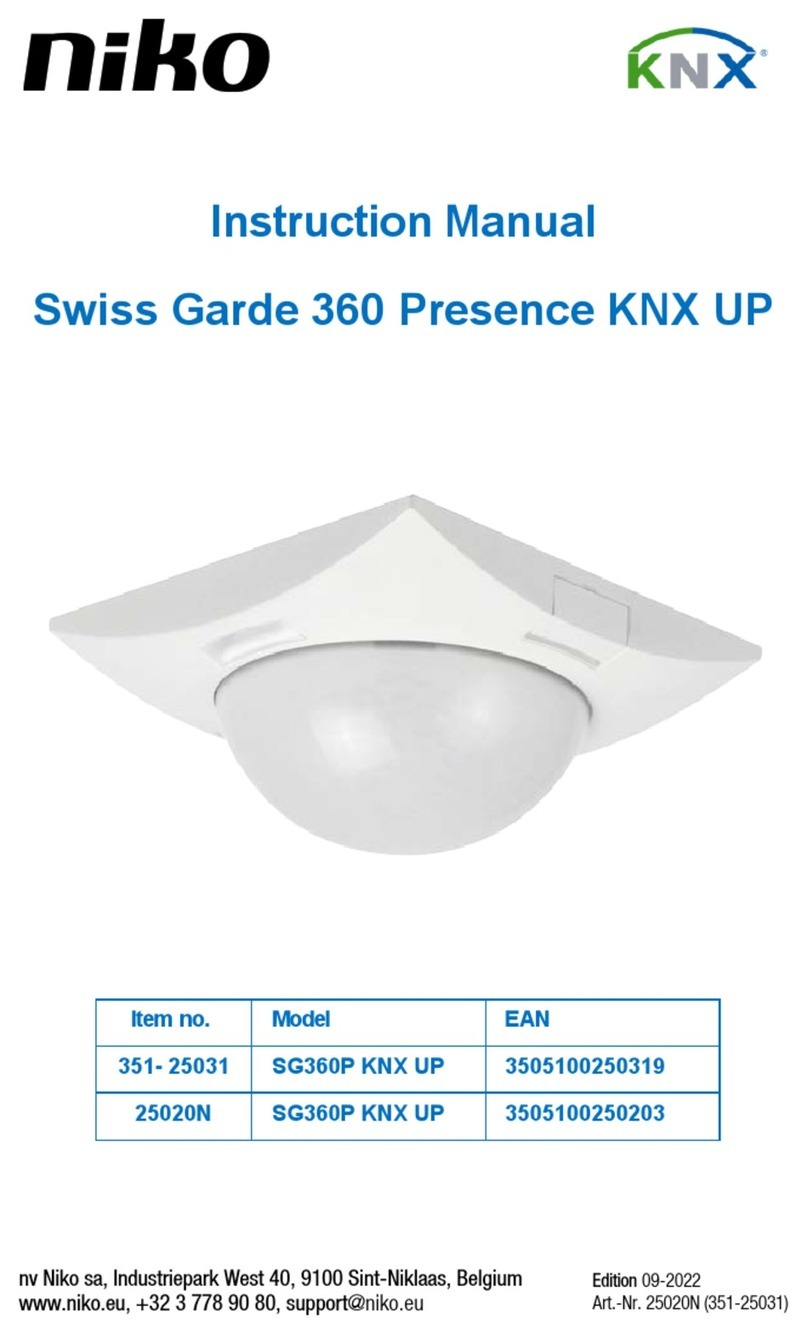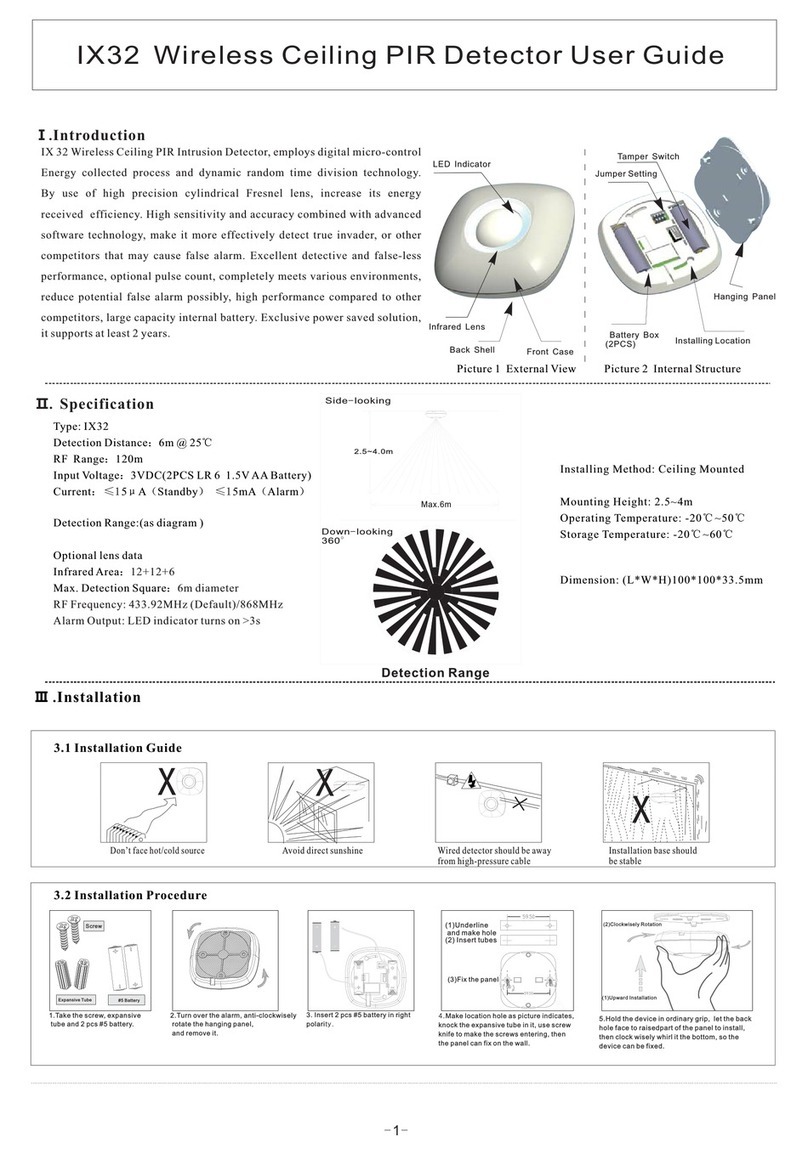GORBEL Tether Track Instruction manual

MONORAIL
COLUMN WELDMENTS
HEADER WELDMENTS
RUNWAYS
BRIDGE
IMPORTANT!
DO NOT DESTROY
Installation, Operation,
& Maintenance Manual
Tether Track®
Free Standing
Rigid Rail Anchor Systems
®
Month Year
Gorbel® Dealer
Date
Gorbel® Customer Order No. / Serial No.
Distributed by Engineered Fall Protection
www.EngineeredFallProtection.com
Tel: (314) 492-4422

TABLE OF CONTENTS
Introduction................................................................................................... 1
Application.................................................................................................... 1
Warnings ...................................................................................................... 2
Restrictions................................................................................................... 3
Definition of Terms ....................................................................................... 3
Installation
Step 1 - Pre-assembly ...............................................................................................4
Step 2 - Column Weldment Installation .....................................................................5
Step 3 - Header Weldment Installation......................................................................6
Step 4 - Runway Installation...................................................................................7-8
Step 5 - Bridge and End Truck Installation...........................................................9-10
Step 6 - Trolley Installation......................................................................................10
Step 7 - Final Steps.................................................................................................11
Sway Bracing Guidelines ........................................................................... 11
Labels......................................................................................................... 12
Authorized Person Instructions .................................................................. 13
General Operational Suggestions .............................................................. 14
Limited Warranty ........................................................................................ 15
Inspection and Maintenance Schedule ..................................................16-18

INTRODUCTION
Thank you for choosing Gorbel® Tether Track® Free Standing Rigid Rail Anchor Systems to solve your
fall protection needs. The innovative design and heavy-duty construction of the Gorbel® Tether Track®
Anchor Systems will provide a superior quality product that will offer years of long term value. Gorbel®
Tether Track® Anchor Systems have been optimally designed and tested to provide the ultimate solution
for fall arrest systems. When properly applied, configured and installed under the supervision of a
qualified person, Tether Track® Rigid Rail Anchor Systems will allow the ultimate in user mobility by
providing a mobile rigid anchorage for the attachment of a lanyard or self-retracting lanyard (SRL). This
reliable performance combined with an ANSI approved Managed Fall Protection Program gives the user
the utmost safety assurance and encourages further safe work practices.
Tether Track® Rigid Rail Anchor Systems are designed using ANSI guidelines and comply with all OSHA
requirements for a fall arrest anchorage system. Tether Track® Free Standing Rigid Rail Anchor Systems
are designed to be statically proof tested up to 110% of the maximum arresting force (MAF). When loaded
through proof testing or during a fall event, the Tether Track® Rigid Rail Anchor Systems will not incur
any visual permanent deformation and may be placed back into service after performing the inspection
requirements detailed in this manual. All engineered Tether Track® Rigid Rail Anchor Systems comply with
OSHA’s required safety factor of 2 and are
designed in accordance with ANSI Z359.6. Gorbel® Tether
Track® Anchor Systems will provide many years of dependable service by following the installation and
maintenance procedures described herein.
APPLICATION
A Gorbel® Tether Track® Free Standing Monorail Anchor System is the best choice for providing
coverage to a narrow rectangular fall zone when an existing support structure is unavailable or
inadequate. The rigid, self-tracking, overhead trolley anchorage, combined with the use of a “Class A”
Self Retracting Lanyard, provides the best solution to minimize fall distance when fall clearance height is
restrictive.
Note: Specify Class A requirement at time of quote, standard design is for 900 pounds MAF.
A Gorbel® Tether Track® Bridge System offers the best solution to a wide rectangular fall zone.
Combined with an SRL, this system allows for user mobility in 3 dimensions. A low inertia bridge
(standard lengths to 18’) glides effortlessly on runways, keeping both the anchorage trolley and bridge
directly above the user. No other systems eliminates swing falls as well as a Gorbel® Tether Track®
Bridge Rigid Rail Anchorage System.
This product meets all applicable OSHA and ANSI standards for fall protection.
Dimensions contained in this installation manual are for reference only and may differ for your
particular application. Please refer to the enclosed General Arrangement Drawing for actual
dimensions.
Normal safety precautions: These include, but are not limited to:
• Checking for obstructions in the fall clearance zone
• Coordinating fall hazard activities with assigned rescue personnel
• Making sure that end stops are in place
• Making sure that the trolley and bridge freely move
For additional safety precautions, see page 13.
1
9/18 Rev C

29/18 Rev C
WARNINGS
1. Do not throw away these instructions.
2. A minimum of a 6”-think reinforced concrete floor is required. Gorbel, Inc. assumes no
responsibility for adequacy or integrity of the mounting surface.
3. Only competent erection personnel familiar with standard fabrication practices should be
employed to assemble these anchor systems. Gorbel is not responsible for the quality of
workmanship employed in the installation of an anchor system according to these
instructions. Contact Gorbel Inc. at 600 Fishers Run, P.O. Box 593, Fishers, New York
14453-0593, 800-821-0086, for additional information if necessary.
4. Read and understand this manual before using equipment.
5. This manual should be read and understood in its entirety, and used as part of a training
program as required by OSHA or any state and local regulatory agency.
6. This and any other included instructions must be provided to the users of this equipment. The
user must understand the proper equipment use and limitations.
7. The Tether Track® Anchor System is only to be used as part of a complete fall protection
system. The buyer or user is responsible for the safety and compatibility of the complete
system.
8. Any component replacement, addition or change to the anchor system or the complete
system requires evaluation by a qualified person.
9. Any fall event can result in injuries. The proper use of this equipment can substantially reduce
an injury. For maximum safety, the worker must be trained in the proper use of this
equipment and all of the components of the fall arrest system.
10.Before each use, the equipment shall be inspected as outlined in the inspection section of
this manual.
11.
The rated capacity, the rated maximum arresting force and the rated number of workers of the
Tether Track® Anchor System must not be exceeded.
12. The maximum arresting force rating of the lanyard or SRL connected to the Tether Track® Anchor
System shall not exceed the rating of the Tether Track® Anchor System.
13.A managed fall protection program which includes a rescue plan is required for the safe use
of this equipment. A worker suspended from this system can lose vital blood flow to the brain
as blood pools in the legs. This is referred to as suspension trauma.
14.Reference the American Institute of Steel Construction (AISC) Manual of Steel Construction,
Specification for Structural Joints using ASTM A325 or A490 Bolts (section 8.d.2) for the
proper procedures to follow when using any torque tightening method.
15.Do not field modify the Tether Track® Free Standing Rigid Rail Anchor System in any way.
Any modifications without the written consent of Gorbel Inc. will void warranty.
16.Gorbel has ensured the compatibility of Tether Track® ONLY with a Gorbel® approved
connector (fall arrest trolley). It is the responsibility of the dealer or end user to ensure proper
design, function and compatibility of any trolley used with Tether Track® that has not been
validated by Gorbel for a fall arrest application.
17.Failure to follow these instructions can result in serious injury or death.
18.Support assemblies are designed to AISC (American Institute of Steel Construction)
specifications. If no movement of the support assembly is required, additional bracing (not
included) to the building steel structure is recommended.

RESTRICTIONS
1. The Tether Track® Anchor System shall be used as part of a complete active fall arrest system. Gorbel is not
responsible for the installation of, or additional equipment added to the system. The Tether Track® Anchor
System is manufactured by Gorbel in accordance with OSHA and ANSI Z359.1 and Z359.6 requirements using
a minimum design factor of two. All components are designed in accordance with AISC and Aluminum
Association guidelines.
2. The end user shall be responsible to make sure that the complete fall arrest system shall be designed, installed,
and used under the supervision of a qualified person in accordance with applicable OSHA regulations and ANSI
Z359 Fall Protection Code voluntary consensus standard in addition to any state and local jurisdiction
regulations and/or requirements.
3. It is the responsibility of the user to determine the suitability of this equipment and any attachments prior to each
use. A certified inspection shall be performed by a qualified person at least once per year.
4. Lanyards or self retracting lifelines (SRL) to be used with the Tether Track® Anchor System shall have a
maximum arresting force (MAF) of 900 lbs. or less.
5. Customer chosen lanyards or SRLs shall minimize freefall distance.
6. It is the responsibility of the end user to verify that the mounting height of this Tether Track® Anchor System will
provide adequate fall clearance when used with the customer chosen lanyard or SRL and harness.
7. Each trolley shall have no more than one person attached.
8. Bridges and trolleys are designed to freely move. To prevent a swing fall and the lengthening of the free fall
distance, the user shall verify the bridge and trolley maintains the closest possible distance to the user whenever
he or she changes position.
9. The fall clearance zone shall be free of dangerous obstructions and electrical hazards.
10. The Tether Track® Anchor System is intended only for indoor use.
11. The Tether Track® Anchor System shall be installed per the general arrangement drawing without deviation or
modification.
12. This system is not designed to be used as a crane. Gorbel accepts no responsibility for use of the Tether
Track® Anchor System other than for its intended use.
DEFINITION OF TERMS
AUTHORIZED PERSON - ANSI defines an authorized person as “a person assigned by the employer to perform
duties at a location where the person will be exposed to a fall hazard”.
COMPLETE FALL ARREST SYSTEM - A complete fall arrest system consists of three main components:
A) Engineered Anchor System - Gorbel’s Tether Track® has been engineered to provide the
maximum safety possible. This system allows for the greatest worker mobility through Gorbel’s
ergonomic enclosed track design. It provides minimal fall distance and obstruction impact by
keeping the anchor point overhead and rigid.
B) Body Support - Only a full body harness is allowed for fall arrest systems. Proper fitting and
wearing of this harness is critical so that it can evenly dissipate the fall arrest forces to the
strongest body parts.
C)
Connecting Means - This is the link between the anchor and body support. A self-retracting lifeline
is recommended. This provides maximum mobility and minimum fall distance. An energy absorbing
lanyard may also be used. These components have a maximum arresting force rating. Gorbel’s
standard Tether Track® design is based on a maximum arresting force of 900 lbs. or less.
FALL CLEARANCE ZONE - The space below the person where there is a potential to fall. This space must remain
clear of obstructions to prevent injury from contact with any objects during a fall event.
LEADING EDGE - The edge of the working surface that a person could fall off. This edge, if located parallel with the
Tether Track® Monorail, may restrict the lifeline from reaching a vertical orientation and cause off-vertical
(horizontal) loading of the anchorage system. Avoid sharp leading edges or use lifelines designed to withstand a
sharp leading edge fall event.
QUALIFIED PERSON - ANSI defines a qualified person as “A person with a recognized degree or
professional certificate and with extensive knowledge, training and experience in the fall protection and rescue field
who is capable of designing, analyzing, evaluating and specifying fall protection and rescue systems...”
3
9/18 Rev C

INSTALLATION
STEP 1 - PRE-ASSEMBLY
1.1 Read entire installation manual before you begin installing your Tether Track® Anchor
System.
1.2 Check packing list to make sure correct quantity of parts is included.
1.3 Tools and materials (by others) typically needed to assemble crane are as follows:
• Mallet • Torque wrench (able to torque up to 95 ft.-lbs.)
• Chalk line • Tape measure
• Hand tools • L
adders/man lifts (transit, laser level, water level, etc.)
• Shop brush • Leveling tools
• Steel shims • Lifting device to lift heavy runways, bridges, headers
• Large square •
Anchor bolts (by others, see 1.4 for guidelines in
• Drill
determining size)
1.4 Recommended guidelines for post-installed anchor bolts:
Note: In addition to the anchor bolt load requirements stated on the quote form, a
minimum 6” thick reinforced concrete floor with a supporting area that is four times
greater than the base plate area and is free of cracks, seams, expansion joints,
and walls is required. Foundation requirements are based on a concrete
compressive strength of 3000# per square inch.
Anchor bolts shall:
• have an ICC-ES listing
demonstrating
suitability for the
application.
• be installed in
accordance with the
manufacturer’s
instructions and
requirements.
Note: Chemical (epoxy)
anchor bolts are recommended.
Note: Hole size may exceed anchor bolt manufacturer’s recommendations. If base plate
hole diameter is greater than bolt diameter plus 1/4”, refer to AISC Design Guide 1
for minimum washer size and thickness recommendations.
TIP: Packing list can be found in a plastic pocket attached to the hardware box: General
Arrangement Drawing and additional inserts can be found enclosed in this installation
manual.
TIP: Recommended guidelines to help you determine anchor bolt size are supplied below
(anchor bolts are not included).
Diagram 1A Typical anchor bolt embedment.
49/18 Rev C

STEP 2 - COLUMN WELDMENT INSTALLATION
2.1 Lay out and mark on floor exact position of column
weldments prior to proceeding with installation (refer to
enclosed General Arrangement Drawing for
recommended dimensions and column weldment
location).
2.2 Position first column weldment in place. Orient column
cap plate (top of column) as shown in diagram 2A.
2.3 While supporting column weldment, drill holes in
concrete floor using pre-drilled holes in column
weldment base as a guide (follow anchor bolt
manufacturer’s recommendations for drill bit size, depth
and special inspections requirements). Vacuum and
brush away cement dust.
2.4 Install anchor bolts (not included) and hardware
according to manufacturer’s installation directions and
requirements.
2.5 Check to see if column weldment is plumb. If column
weldment is not plumb, loosen anchor bolt nuts and place steel shims (not included)
or grout (not included) under base of column weldment until plumb. After column
weldment is plumb, tighten all nuts.
2.6 Install remaining column weldments (repeat Steps 2.2 through 2.5).
WARNING
Working at an offset vertical angle may cause a swing fall and can result in contact with
the column. Padding should be added to the column to prevent injury. Note: When using
a bridge system, the trolley should remain directly overhead at all times.
ATTENTION
Support assemblies can be bolted together on the floor then lifted into position to bolt to
floor if you have an area large enough to assemble them.
TIP: Be sure that column cap plate (top of column) is
oriented in direction of header weldment.
Diagram 2A. Orienting column cap
plate.
5
9/18 Rev C

STEP 3 - HEADER WELDMENT INSTALLATION
3.1 Lift and position header weldment onto two secured
column weldments (refer to General Arrangement
Drawing for recommended dimensions and header
weldment location). Using clamp plates and hardware
provided, attach header weldment to column weldment
(refer to diagram 3A for 2-bolt column cap plate and
diagram 3B for 4-bolt column cap plate).
3.2 Tighten hardware to 95 ft.-lbs. of torque per nut.
3.3 Install remaining header weldments (repeat Steps 3.1 through 3.2).
IMPORTANT: Threaded rod for header weldment installation
is either the same length or shorter than threaded rod used
for runway or monorail hangers; do not confuse the two.
Diagram 3A. Installing header
weldments on 2-bolt column cap plates.
Diagram 3B. Installing header
weldments on 4-bolt column cap plates.
69/18 Rev C
WARNING
There must be a minimum of two threads showing at both ends of the threaded rod.

STEP 4 - RUNWAY OR MONORAIL INSTALLATION
Runway or Monorail to Header Weldment Connections
4.1 Suspend runway section under installed support
structure (refer to enclosed General Arrangement
Drawing for recommended dimensions and runway
or monorail location).
4.2 Using spine clamp angles, clamp plates, and
hardware provided, attach runway or monorail
section to header weldment, as shown in diagram
4A or 4B.
4.3 Check to make sure that runway is level (within +/-
1/8”) and parallel to opposite runway (within +/- 1/4”)
over a 20’-0” distance.
4.4 Tighten hanger hardware to full compression of
lockwasher, do not exceed 50 ft.-lbs.
4.5 If you DO NOT have additional runways or monorails
to install, proceed to Step 4.13 on page 8 otherwise proceed to Step 4.6 on page 8.
Splice Joint Instructions
IMPORTANT: To install additional runway sections, runways must be spliced together.
4.6 Attach hardware to splice joint. Slide splice joint over track portion of installed runway.
4.7 Lift next runway section into position for splicing to previously installed runway, bringing runway
ends together. Maximum gap between ends of load carrying flanges shall be less than or equal to
1/16” (1.5mm). Center lower splice joint over the two track ends (diagram 4C or 4D, page 8).
WARNING
Do not deviate from the bridge “span” dimension
shown on the General Arrangement Drawing.
Bridge “span” is the distance between runways
(centerline to centerline).
IMPORTANT: Keep in mind that splice joints must be
within 48” of hanger center.
IMPORTANT: The closer the runways are to parallel
the easier the bridge is to move.
Diagram 4A. Attaching runway to header
weldment (standard hangers).
7
9/18 Rev C
Diagram 4B. Attaching runway to header
weldment (3-hole hangers).
WARNING
There must be a minimum of two threads showing
at both ends of the threaded rod.
WARNING
If 3-hole hangers are being used, one threaded
rod must be secured through the runway top tube.
Failure to do so may result in the runway falling to
the floor.
WARNING
Do not deviate from the dimensions specified in the General Arrangement Drawing for maximum
space from header center to splice joint. Typically 48” maximum.

STEP 4 - RUNWAY OR MONORAIL INSTALLATION (CONTINUED)
4.8 Place a truss splice plate on each side of runway truss tube and
bolt
into place, as shown in diagram 4C or 4D. “Hand- tighten” bolts.
Note: Do not torque bolts until track has been attached to header
weldment and adjusted for smooth transition - Steps 4.9 through 4.10.
4.9 To attach track to header weldment, repeat Steps 4.2 through 4.4,
on page 7.
4.10 To adjust track for smooth transition, use bolts along top of splice joint
to force track down onto lower flanges of splice. Check to see that
transition from one track to the other is smooth: no raised areas to inhibit
trolley or end truck operation. Use bolts along the sides of splice joint to
align track laterally. Check to see that track portion of runway is
horizontally and vertically flush: transition from one track to the other is
smooth. Tighten jam nuts to lock bolts in place (refer to diagram 4C or 4D).
Note: Track running-surface misalignment at joints shall be adjusted
within 1/32” (1mm) when installed.
4.11 Tighten nuts on truss splice plate to full compression of lockwasher, do
not exceed 40 ft.-lbs.
For Z and ZD tracks:
4.12 Refer to the General Arrangement Drawing to plan the sequence in
which the monorail sections will be installed. Monorail sections that have
splice plate style connections (Z and ZD styles) may need to be
assembled to the mating monorail section prior to lifting and installing on
the headers. Do not lift greater than two assembled (splice plate style
connection only) monorail sections at a time. Do not lift assemblies
greater than 54 feet long. Do not allow more than 13 feet of track to
extend past the header without support. For sleeve and truss plate style
connections (S, SL, SLX and SLD styles), only lift these sections
individually (not assembled).
4.13 Splice Joint Plate Style Connections: Align mating monorail sections and install
hardware (diagram 4E). Verify track flanges (trolley wheel running surfaces) are aligned
before tightening. Run a finger on the inside of the track flange and use a soft blow
mallet to align plates until no lip is felt. Also check alignment of mating sections for bow
and camber. Steel shims (by others) may be used between the splice plates to adjust
any misalignment. Tighten hardware to 50 ft.-lbs. of torque per nut.
4.14 Repeat Steps 4.6 through 4.11 for remaining runways.
4.15 Install end stops as shown in diagram 4F (molded bumper with thru bolt) to one end of runway or monorail
(leaving other end open for bridge or trolley installation). Tighten nut on thru bolt to full compression of
lockwasher.
WARNING
Do not over-tighten bolts on splice joints; this may permanently
deform track and cause binding.
IMPORTANT: To install additional runway sections, runways
must be spliced together.
Diagram 4C. Splicing tracks together.
Diagram 4F. Installing end stop.
89/18 Rev C
WARNING
Do not deviate from the dimensions specified in the General
Arrangement Drawing for maximum space from header center to
splice joint. Typically 48” maximum.
JAM NUT
TRUSS SPLICE PLATE
CLAMPING BOLT
DUAL TRACK
SPLICE JOINTS
Diagram 4D. Splicing dual trussed track.
1/2"-13 X 1-1/2" HHCS
FLAT WASHER
LOCK NUT
Diagram 4E. Plate style splice joint detail.
WARNING
The locations of the runways cannot deviate from the locations
shown on the drawing. Changing the locations will void the design
and the warranty.

STEP 5 - BRIDGE AND END TRUCK INSTALLATION
5.1 Make sure end stops have been installed in one
end of both runways.
5.2 Prior to adding bridge, clean inside flanges of track
with clean dry cloth (do not use any kind of
cleaning solution) to remove grit or debris that
may have collected during shipping, storage, or
installation.
For Non-Coped Aluminum Bridges
5.3 Make sure nylon spacers are attached to end
truck before installing end truck on bridge.
5.4 Slide an end truck over one end of bridge (refer to
the General Arrangement Drawing for exact end
truck location) and clamp into place, as shown in
diagram 5A.
5.5 Slide and position the non-clamping end truck on
the other end of bridge (refer to the General
Arrangement Drawing for exact end truck location).
5.6 Go to Step 5.10.
For Coped Aluminum Bridges
5.7 Make sure nylon spacers are attached to end truck
before installing end truck on bridge.
5.8 Slide an end truck over coped brackets on one end of
the bridge (refer to the General Arrangement
Drawing for exact end truck location) and clamp into
place as shown in diagram 5B.
5.9 Slide and position non-clamping end truck on the
other end of bridge (refer to the General
Arrangement Drawing for exact end truck location).
5.10 Install an end stop to one end of the bridge (diagram 5C).
Tighten nut on thru bolt to full compression of lockwasher.
IMPORTANT: ONLY ONE end truck is clamped to the
bridge: the other is not. The non-clamping end truck
allows adjustment for any runway misalignment.
Diagram 5A. Installing clamping end truck on
Aluminum bridges.
Diagram 5B. Installing clamping end truck on
Aluminum bridges,
9
9/18 Rev C
Diagram 5C. Installing end stop.

STEP 5 - BRIDGE AND END TRUCK INSTALLATION (CONTINUED)
5.11 At both ends of bridge, install a shear lug bolt in hole at top of bridge (or in the coped
brackets) to prevent bridge from sliding out of end trucks. Install bolts with head of bolt on
underside of top flange with threads pointing up (diagram 5A or 5B, page 9).
5.12 Lift bridge up to runway ends and simultaneously insert end trucks into open ends of
runways.
5.13 Immediately install end stops in open ends of runways to prevent bridge from exiting
runways (refer to diagram 4F, on page 8).
5.14 Roll bridge down length of runways to check for smooth travel. If travel is not smooth,
check track for level and parallel (Step 4.3, page 7) and check to make sure that only one
end truck on bridge is clamped.
STEP 6 - TROLLEY INSTALLATION
6.1 Clean inside flanges of track with a clean, dry cloth
(do not use any kind of cleaning solution) to
remove grit or debris that may have collected during
shipping, storage, or installation.
6.2 Be sure end stop is installed in one end of bridge/
monorail.
6.3 Verify that the eyenut is securely fastened to the
trolley with the spring pin installed (refer to diagram
6A).
6.4 If using a self-retracting lifeline, attach
self-retracting lifeline to trolley eye nut
using ANSI approved hardware supplied
with lifeline. Refer to the self-retracting
lifeline manual.
6.5 Roll trolley into open end of track on
bridge/monorail.
6.6 Install end stop on the open end of bridge/monorail (diagram 4F, on page 8, or 5C, on
page 9). Tighten nut on thru bolt to full compression of lockwasher.
10 9/18 Rev C
Diagram 6B. F500 and Bridge Trolleys.
WARNING
Failure to install shear lug bolt assemblies may result in the bridge and worker falling to
the floor.
SPRING PIN
CLAMP PLATE
EYENUT
BLACK
SPRING
WASHER
GUIDE
BUSHINGS
Diagram 6A. Tether Track® trolley installation.

STEP 7 - FINAL STEPS
7.1 Verify all end stops are installed.
7.2 Check to make sure all bolts are tightened to specifications and lockwashers are flat.
7.3 If necessary, touch up system with paint provided.
7.4 Install yellow rubber tracdoms on steel runway ends.
7.5 Keep Packing List, Installation Manual and General Arrangement Drawing together and
file in safe place.
SWAY BRACING INSTRUCTIONS (OPTIONAL)
Support assemblies are designed to AISC (American Institute of Steel Construction) specifications using
recommendations from ANSI Z359.6. A fall event may cause longitudinal and lateral movement up to the
OSHA limit of 2 inches. If reduced movement of the support assemblies is desired, then sway bracing (not
included) can be added. The installer or end user must determine the possible locations of the bracing
based on the specific application.
Bracing can be added in one of three formats, or a combination of any three.
A) The most typical place to brace is directly to a
building column. Providing a brace from a
building column to the lateral (side) and
longitudinal (lengthwise) axis of the support steel
provides extreme rigidity throughout the system,
and requires only minimal locations (2 or 3
corners of the system is typically adequate, see
‘A’ in diagram 1).
B) Another method is to brace back to the ceiling
above the crane. Again, bracing at the corners of
the system in both a lateral and longitudinal
direction is sufficient (see ‘B’ in diagram 1),
providing the distance to the ceiling is not
greater than 10 feet. For distances greater than
10 feet, additional points may need to be braced
both laterally and longitudinally at the discretion
of the end user and/or the installer.
C)
Finally, if the system is located at a point where it
is not practical or possible to brace to the building
columns or the ceiling structure, cross bracing
can be done. This can be added to the sides of the system (see ‘C’ in diagram 1) to control longitudinal
sway, or across the open ends to limit lateral motion (not shown). This can also be added to the top of
the system, but should be check to make sure that it does not interfere with the travel of the bridge.
It should be noted that the use of sway bracing is purely subjective because it is not a requirement of
Gorbel, Inc. No specifications exist detailing appropriate methods, and the ultimate quantity and type is at
the discretion of the user and installer. If bracing, always determine if the building structure is
adequate.
11
9/18 Rev C
IMPORTANT: Do not throw away this manual: the manual provides critical instructions on the safe
use, inspection and maintenance of this equipment. Every user is required to read and understand
this manual.
TIP: Do not throw away packing list: can be referenced for spare parts at a later date if required.
Diagram 1. Examples of typical sway bracing locations.

LABELS
Bridge and Monorail Labels
Trolley Labels
12 9/18 Rev C
Cyan
Part Number: SS-99160
Ticket Number: 281373
Size: 20“W x 5”T
Corner Radius:
Artist: GSS
Date: 7/24/12
8/16 8/20 8/28 8/29
PMS 355 PMS 647 Black
20”
5”
COMPLIES WITH OSHA AND ANSI Z359.1 REQUIREMENTS
P/N: SS-99160 Fishers, NY, U.S.A.
MAXIMUM
ARRESTING FORCE
PER WORKER
310
900
1 WORKER MAXIMUM
LBS CAPACITY
EACH WORKER WITH TOOLS
LBS
Manufactured by
Cyan
Part Number: SS-99161
Ticket Number: 281374
Size: 20“W x 5”T
Corner Radius:
Artist: GSS
Date: 7/24/12
8/16 8/28 8/29
PMS 355 PMS 647 Black
20”
5”
COMPLIES WITH OSHA AND ANSI Z359.1 REQUIREMENTS
P/N: SS-99161 Fishers, NY, U.S.A.
MAXIMUM
ARRESTING FORCE
PER WORKER
310
900
2 WORKERS MAXIMUM
LBS CAPACITY
EACH WORKER WITH TOOLS
LBS
Manufactured by
One Worker, Single Bridge or Monorail Label.
Two Workers, Single Monorail Label.
Bridge and Monorail Warning Label.
Trolley Label.
Trolley Warning Label.
WARNING
This product can expose you to chemicals, including acrylonitrile
,
which are known to the State of California to cause cancer. For
more information go to:
www.P65Warnings.ca.gov

AUTHORIZED PERSON INSTRUCTIONS
Performing duties where a fall hazard exists can be dangerous. Therefore, it is important for the
Authorized Person to be instructed in the use of their Complete Fall Arrest System and to understand the
severe consequences of careless use. It is not intended that these suggestions take precedence over
existing plant safety rules and regulations or OSHA regulations. However, a thorough study of the
following information should provide a better understanding of safe use and afford a greater margin of
safety. It must be recognized that these are suggestions for the authorized person working in the
presence of a fall hazard. It is the responsibility of the owner to make personnel aware of all federal, state
and local rules and codes, and to make certain authorized persons are properly trained.
Qualifications
Working while being exposed to a fall hazard, to be safe and efficient, requires skill: the exercise of
extreme care and good judgment, alertness and concentration, and rigid adherence to proven safety rules
and practices as outlined in applicable and current ANSI and OSHA safety standards. In general practice,
no person should be authorized to work while being exposed to a fall hazard:
• Who cannot speak the appropriate language or read and understand the printed instructions.
• Who is not of legal age to work while being exposed to a fall hazard.
• Whose hearing or eyesight is impaired (unless suitably corrected with good depth perception).
• Who may be suffering from heart or other ailments which might interfere with their safe
performance.
• Who may be pregnant or have any condition where the exposure to the maximum arresting force
of a fall event may be a health risk.
• Unless the person has carefully read and studied this operation manual.
• Unless the person has been properly instructed.
• Unless their is a rescue plan in place and at least one additional authorized person that has been
instructed in the implementation of the rescue plan.
• Unless the person has demonstrated his or her instructions through practical use of the Complete
Fall Arrest System.
• Unless the person is familiar with fall protection equipment and the safe use of this equipment.
Handling the Bridge Travel Motion
Before using the bridge of the Tether Track® Anchorage System, the Authorized Person should be sure
that the bridge is clear of any obstructions that would prevent it from freely traveling and that the fall zone,
beneath where the work will be performed, is clear of any obstructions that would decrease the required
fall clearance height. During use, the bridge should be brought into position so that it is directly over the
Authorized Person. The bridge should follow the user’s movement and remain overhead. Sudden
movements should be avoided to prevent any inertia forces from the bridge causing a loss of balance.
Only limited length aluminum bridges are used to keep inertia forces to a minimum. For multiple bridge
systems, adequate clearance should be maintained to prevent bridges from impacting each other during a
fall event.
Handling the Trolley Motion
Before using the trolley of the Tether Track® Anchorage System, the Authorized Person should be sure
that the trolley is clear of any obstructions that would prevent it from freely travelling and that the fall zone,
beneath where the work will be performed, is clear of any obstructions that would decrease the required
fall clearance height. During use, the trolley should be brought into position so that it is directly over the
Authorized Person. The trolley should follow the user’s movement and remain overhead. Failure to keep
the trolley overhead may cause a pendulum motion during a fall event that will increase fall distance and
may expose the user to a side impact with any obstructions. A maximum off vertical angle of 30 degrees
is allowed for monorail systems where the pendulum motion would be restricted by a leading edge. In this
application, the leading edge may not be sharp enough to cause damage to the lanyard or self retracting
lifeline web or cable or a lanyard; or an SRL specifically designed for a leading edge shall be used.
13
9/18 Rev C

GENERAL OPERATIONAL SUGGESTIONS
Know Your Environment and Your Complete Fall Arrest System
Authorized persons should be familiar with the principal parts of the Fall Arrest System and have a thorough knowledge of the safe use,
inspection, and limitations of this equipment. The authorized person should be required to know the procedure to rescue a person after a fall
event and be trained to rapidly implement this procedure. The authorized person(s) should be aware of any conditions that may change while
they are exposed to a fall hazard that may jeopardize the integrity of the fall arrest system and the rescue plan. For example, obstructions moving
into a fall clearance zone.
Responsibility
Each authorized person(s) should be held directly responsible for the safe use of the Fall Arrest System. Whenever there is any doubt as to
SAFETY, the authorized person should remove themselves from exposure to the fall hazard and refuse to re-expose themselves until safety has
been assured. It is the responsibility of the employer to train the authorized person(s) in the safe use of the Fall Arrest System and to have a
managed Fall Protection Plan in place.
Do not permit ANYONE to use this equipment unless they are authorized, there is at least one other authorized person within visual range, and
there is a rescue plan in place.
Inspection
Test the Tether Track® Anchorage System movement and any attachments and connections before each use. Whenever the authorized
person(s) finds anything wrong or apparently wrong, the problem should be reported immediately to the proper supervisor and appropriate
corrective action taken.
Suggestions for use of the Tether Track® Anchorage System
The good authorized person should know and follow these suggestions for safe use of this protection equipment.
1. The bridge and/or trolley should move smoothly and gradually as the user moves. If a self retracting lifeline is being used and the retraction
tension is not great enough to move the trolley and/or bridge, the user should abruptly jerk the lifeline to lock it and while maintaining tension
in the lifeline, the user should pull on the lifeline until the trolley and/or bridge is overhead. Slack should then be removed by allowing the
lifeline to retract. Slack should be kept to a minimum at all times. A maximum SRL weight of 40 lbs. applies to the Recover Trolley only.
2. The trolley should be located above the user and as close to the user as possible to minimize freefall distance. The user should verify that the
trolley and/or bridge move as close as possible to the user whenever he or she moves. In the event of a fall, this will help to prevent
swinging. The user must not work outside of the designed fall zone.
3. For bridge systems, lanyards and lifelines should be kept vertical. Monorail systems are designed to allow for a 30 degree off-vertical side
pull. This maximum angle is selected to minimize the horizontal acceleration experienced during a swing fall. Offset falls, if not restricted by a
vertical face, will increase the freefall distance. This extra distance must be accounted for in the fall clearance calculations.
4. Be sure everyone in the immediate area is aware of your use of fall protection equipment and that the fall zone remains clear. Confirm that
there is at least one person visually aware of your activities and that there is an authorized fall rescue person on-site.
5. Do not exceed the rated load capacity, number of workers, or maximum arresting force of the Tether Track® Anchor System. Labels with
this information are located on every track section for monorails and are located on the bridge for bridge systems.
6. Make certain that before exposing yourself to a fall hazard, components are properly connected, connectors are properly oriented and latches
are fully closed and locked.
7. Check to be sure that all trip hazards are removed and that the fall protection zone is clear of dangerous obstructions when moving to a new
location on the Tether Track® Anchor System. Be aware of the boundaries of the fall protection zone. This is detailed on your general
arrangement drawing supplied with the manual at the time of shipment.
8. At no time should the authorized person be working alone while exposed to a fall hazard. In the event of a fall, a worker left suspended will
lose the ability to circulate blood by the contractions of muscles in their legs. This combined with being suspended vertically will eventually
result in lack of blood flow to the brain and can lead to death.
9. Do not use equipment with unused Y-lanyard webs, straps or tag lines hanging loose. These should be properly stored to prevent tripping
hazards and the possibility of snagging during a fall event that may cause an excessive arresting force.
10. This equipment should not be used for any purpose other than fall protection unless it has been specifically designed for multiple purposes.
11. When multiple trolleys or bridges are provided on the same track(s), adequate spacing should be maintained between the trolleys or bridges
to prevent any impact with each other during a fall event.
12. Whenever the authorized person leaves the Tether Track® Anchorage System the following procedure should be followed:
• Verify that you are removed from the fall hazard or that you have another method of fall protection.
• Remove your lifeline from the body harness D-ring or remove the lanyard from the trolley eye nut.
• If using a self retracting lifeline, securely attach a tagline to the lifeline and allow it to slowly retract.
• Remove lanyard and harness and clean any grease or dirt per manufacturers instructions. Allow to drip dry and store in a cool,
clean, dry environment out of direct sunlight.
• Make visual check before leaving anchor system.
• Notify appropriate person that you are no longer using the fall arrest system.
13. After a fall event or if a safety concern is uncovered during inspection, an “out of service” warning sign or signal should be displayed at the
access and egress point to this equipment until the system can be repaired or replaced and inspected.
14. ANY SAFETY FEATURES AND MECHANISMS BUILT-IN OR OTHERWISE PROVIDED WITH THE TETHER TRACK® ANCHOR SYSTEM
BY GORBEL ARE REQUIRED FOR THE SAFE USE OF THIS EQUIPMENT. DO NOT, UNDER ANY CIRCUMSTANCES, REMOVE OR
OTHERWISE IMPAIR OR DISABLE THE PROPER FUNCTIONING OF ANY SAFETY MECHANISMS OR FEATURES BUILT-IN OR
OTHERWISE PROVIDED BY GORBEL FOR SAFE OPERATION OF THIS EQUIPMENT. ANY REMOVAL, IMPAIRMENT OR DISABLING
OF ANY SUCH SAFETY MECHANISMS OR FEATURES OR OTHER OPERATION OF THE TETHER TRACK® ANCHOR SYSTEM
WITHOUT THE COMPLETE AND PROPER FUNCTIONING OF ANY SUCH SAFETY MECHANISMS OR FEATURES AUTOMATICALLY
AND IMMEDIATELY VOIDS ANY AND ALL EXPRESS AND IMPLIED WARRANTIES OF ANY KIND OR NATURE.
14 9/18 Rev C

LIMITED WARRANTY
It is agreed that the equipment purchased hereunder is subject to the following LIMITED warranty and no other. Gorbel Incorporated (“Gorbel”) warrants the manual
push-pull Work Station Cranes, Jib Crane, Gantry Crane, and Tether Track® products to be free from defects in material or workmanship for a period of ten years or
20,000 hours use from date of shipment. Gorbel warrants the Motorized Work Station Cranes and Jib Crane products to be free from defects in material or
workmanship for a period of two years or 4,000 hours use from the date of shipment. Gorbel warrants the G-Force® and Easy Arm® products to be free from defects
in material or workmanship for a period of one year or 2,000 hours use from the date of shipment. This warranty does not cover Gantry Crane wheels. This
warranty shall not cover failure or defective operation caused by operation in excess of recommended capacities, misuses, negligence or accident, and alteration or
repair not authorized by Gorbel. No system shall be field modified after manufacture without the written authorization of Gorbel, Inc. Any field modification made to
the system without the written authorization of Gorbel, Inc. shall void Gorbel’s warranty obligation. OTHER THAN AS SET FORTH HEREIN, NO OTHER EXPRESS
WARRANTIES, AND NO IMPLIED WARRANTIES, ORAL OR WRITTEN, INCLUDING BUT NOT LIMITED TO THE WARRANTIES OF MERCHANTABILITY OR
FITNESS FOR A PARTICULAR PURPOSE, ARE MADE BY GORBEL WITH RESPECT TO ITS PRODUCTS AND ALL SUCH WARRANTIES ARE HEREBY
SPECIFICALLY DISCLAIMED. GORBEL SHALL NOT BE LIABLE UNDER ANY CIRCUMSTANCES FOR ANY INCIDENTAL, SPECIAL AND/OR CONSEQUENTIAL
DAMAGES WHATSOEVER, WHETHER OR NOT FORESEEABLE, INCLUDING BUT NOT LIMITED TO DAMAGES FOR LOST PROFITS AND ALL SUCH
INCIDENTAL, SPECIAL AND/OR CONSEQUENTIAL DAMAGES ARE HEREBY ALSO SPECIFICALLY DISCLAIMED. Gorbel’s obligation and Purchaser’s or end
user’s sole remedy under this warranty is limited to the replacement or repair of Gorbel’s products at the factory, or at the discretion of Gorbel, at a location designated
by Gorbel. Purchaser or end user shall be solely responsible for all freight and transportation costs incurred in connection with any warranty work provided by Gorbel
hereunder. Gorbel will not be liable for any loss, injury or damage to persons or property, nor for damages of any kind resulting from failure or defective operation
of any materials or equipment furnished hereunder. Components and accessories not manufactured by Gorbel are not included in this warranty. Purchaser’s or end
user’s remedy for components and accessories not manufactured by Gorbel is limited to and determined by the terms and conditions of the warranty provided by the
respective manufacturers of such components and accessories.
A) DISCLAIMER OF IMPLIED WARRANTY OF MERCHANTABILITY
Gorbel and Purchaser agree that the implied warranty of merchantability is excluded from this transaction and shall not apply to the goods
involved in this transaction.
B) DISCLAIMER OF IMPLIED WARRANTY OF FITNESS FOR PARTICULAR PURPOSE
Gorbel and Purchaser agree that the implied warranty of fitness for particular purpose is excluded from this transaction and shall not apply to
the goods involved in this transaction.
C) DISCLAIMER OF EXPRESS WARRANTY
Gorbel’s agents, or dealer’s agents, or distributor’s agents may have made oral statements about the machinery and equipment described in
this transaction. Such statements do not constitute warranties, and Purchaser agrees not to rely on such statements. Purchaser also agrees
that such statements are not part of this transaction.
D) DISCLAIMER OF SPECIAL, INCIDENTAL AND CONSEQUENTIAL DAMAGES
Gorbel and Purchaser agree that any claim made by Purchaser which is inconsistent with Gorbel’s obligations and the warranty remedies
provided with Gorbel’s products, and in particular, special, incidental and consequential damages, are expressly excluded.
E) DEALER OR DISTRIBUTOR NOT AN AGENT
Gorbel and Purchaser agree that Purchaser has been put on notice that dealer or distributor is not Gorbel’s agent in any respect for any
reason. Gorbel and Purchaser also agree that Purchaser has been put on notice that dealer or distributor is not authorized to incur any
obligations or to make any representations or warranties on Gorbel’s behalf other than those specifically set forth in Gorbel’s warranty provided
in connection with its product.
F) MERGER
This warranty agreement constitutes a final and complete written expression of all the terms and conditions of this warranty and is a complete
and exclusive statement of those terms.
G) PAINTING
Every crane (excluding components) receives a quality paint job before leaving the factory. Unfortunately, no paint will protect against the
abuses received during the transportation process via common carrier. We have included at least one (1) twelve ounce spray can for touchup
with each crane ordered (unless special paint was specified). If additional paint is required, contact a Gorbel® Customer Service
Representative at 1-800-821-0086 or 1-585-924-6262.
Title and Ownership:
Title to the machinery and equipment described in the foregoing proposal shall remain with Gorbel and shall not pass to the Purchaser until the full amount
herein agreed to be paid has been fully paid in cash.
Claims and Damages:
Unless expressly stated in writing, goods and equipment shall be at Purchaser’s risk on and after Seller’s delivery in good shipping order to the Carrier. Gorbel
shall in no event be held responsible for materials furnished or work performed by any person other than it or its authorized representative or agent.
Cancellations:
If it becomes necessary for the purchaser to cancel this order wholly or in part, he shall at once so advise Gorbel in writing. Upon receipt of such written notice
all work will stop immediately. If the order entails only stock items, a flat restocking charge of 15% of the purchase price will become due and payable by
Purchaser to Gorbel. Items purchased specifically for the canceled order shall be charged for in accordance with the cancellation charges of our supplier plus
15% for handling in our factory. The cost of material and/or labor expended in general fabrication for the order shall be charged for on the basis of total costs to
Gorbel up to the time of cancellation plus 15%.
Returns:
No equipment, materials or parts may be returned to Gorbel without express permission in writing to do so.
Extra Charge Delay: If Purchaser delays or interrupts progress of Seller’s performance, or causes changes to be made, Purchaser agrees to reimburse Gorbel
for expense, if any, incident to such delay.
Changes and Alterations:
Gorbel reserves the right to make changes in the details of construction of the equipment, as in its judgment, will be in the interest of the Purchaser; will make
any changes in or additions to the equipment which may be agreed upon in writing by the Purchaser; and Gorbel is not obligated to make such changes in
products previously sold any customer.
Third Party Action:
Should Gorbel have to resort to third party action to collect any amount due after thirty (30) days from date of invoice, the Purchaser agrees to pay collection
costs, reasonable attorney’s fees, court costs and legal interest.
OSHA Responsibilities:
Gorbel agrees to fully cooperate with Purchaser in the design, manufacture or procurement of safety features or devices that comply with OSHA regulations. In
the event additional equipment or labor shall be furnished by Gorbel, it will be at prices and standard rates then in effect, or as may be mutually agreed upon at
the time of the additional installation.
Equal Employment Opportunity:
Gorbel agrees to take affirmative action to ensure equal employment opportunity for all job applicants and employees without regard to race, color, age, religion,
sex, national origin, handicap, veteran, or marital status. Gorbel agrees to maintain non-segregated work facilities and comply with rules and regulations of the
Secretary of Labor or as otherwise provided by law or Executive Order.
15
9/18 Rev C

INSPECTION AND MAINTENANCE SCHEDULE
GORBEL® TETHER TRACK® FREE STANDING BRIDGE AND MONORAIL ANCHOR
SYSTEMS: INSPECTION BEFORE EACH USE
OSHA and ANSI require an inspection of the entire fall protection system before each use. The Tether Track®
Anchor System is a vital component of the complete fall protection system. Checking for the proper functioning of
this system is essential. These pre-use checks are intended to be tactile and visual.
If the required maintenance procedures have been properly followed, connections between the track and support-
ing structure will remain secure. Any extreme conditions that you are aware of that may have occurred since the
last maintenance procedure should be reported to the proper supervisor and an evaluation made to determine if the
maintenance schedule requires modification. Some examples of extreme conditions are: a fall arrest event,
excessive vibration in the system or structure, swaying of the support structure, an impact to the system or support
structure, or an unauthorized person working on the system.
The previous sections, Authorized Person Instructions and General Operational Suggestions, provide important
pre-use and in-use instructions and inspection guidance. The following provides a suggested checklist divided into
the six main components of the Tether Track® Anchor System. Components not listed require pre-use inspection as
detailed by their manufacturers.
If the answer to any of these questions on the checklist is NO, remove yourself from the fall hazard and report the
issue to the proper supervisor.
16 9/18 Rev C
YES NO!
AUTHORIZED PERSON
Are you authorized by your employer to perform work at height?
Are you aware of a written procedure for the use of this equipment and does it include a
rescue plan?
Have you been trained in the use of this equipment?
SURROUNDING ENVIRONMENT
Is this system being used as approved by a qualified person?
Is there adequate clearance to arrest a fall?
Will you remain in the fall zone area allowed by this system?
Are dangerous obstructions removed from the fall zone?
Are nearby people aware of your pending work at height?
Is there an authorized person within sight that has been trained in the rescue procedure?
SUPPORTING STRUCTURE
Is the integrity of the foundation adequate?
Are column weldments and header weldments free of deformed, bent or damaged members?
Are all anchor bolts installed and is the column weldment base contacting the foundation?
CONNECTIONS TO TETHER TRACK®
Has scheduled maintenance been appropriately performed?
TETHER TRACK®
Is track rigid and horizontal?
Is track free of deformed, bent or damaged sections?
Are endstops in place?
Is the Tether Track® Anchor System rated for the capacity and number of people using it?
TROLLEY
Is there only one lanyard or SRL attached to the trolley?
Is lanyard or SRL compatibly attached to trolley eyenut?
Does trolley freely roll and remain overhead?

INSPECTION AND MAINTENANCE SCHEDULE
GORBEL® TETHER TRACK® FREE STANDING BRIDGE AND MONORAIL ANCHOR
SYSTEMS: INSPECTION AFTER A FALL ARREST EVENT
Free Standing Supporting Structure
• Inspect foundation for any signs of damage or cracking. Repair as required.
• Inspect column weldment connections to foundations. Check torque requirements per anchor bolt
manufacturer’s instructions (typically applying 20% of installed torque value is sufficient to determine if
anchor bolt is loose).
• Inspect column weldment and header weldment for any visual cracking in welds and/or any permanent
deformation. Repair as required.
• Verify column to header hardware is tightened to 95 ft.-lbs. of torque per nut.
Runway/Monorail/Bridge
• Support each Tether Track® section by other means and loosen all support hardware (splice
joint, spine clamp angle, truss splice plate, clamped endtruck and sway braces). This will
relieve any stress and misalignment in the anchor system members that may be retained by
the hardware from the arresting force. Any misalignment caused by hardware/member shift
must be removed before the track sections can be measured for permanent deformation.
• Ensure all fitments and track sections are aligned. Re-tighten hardware on all components
per installation instructions in this manual.
• At the location in the track where the fall arrest incident took place,
measure the track opening and compare to the dimension and
tolerance shown in Diagram A. Replace section of track if
measurement is not within the tolerance.
• Verify the Tether Track® members have not undergone any other
permanent deformation. This can be achieved by measuring the
camber and bow (Diagram B) of the enclosed track member and top
tube member (if trussed track).
• Using a string (kite), two clamps, and a measuring device (ruler,
tape measure, etc.), measure from support to support (covering
track area where arrest took place).
• Clamp one end of string to the concave face of track, at the support. Travel to the other support
pulling the string taut, not allowing it to sag, and clamp it in same location on track at the support.
• Measure the distance from the string to the track face where this distance is greatest (usually at mid-span).
• If this measurement is greater than .125” X Length of track in feet between supports / 10’ then
replacement of track section is required.
• Repeat this for both bow and camber of both the enclosed track member and top tube member (if trussed).
•
If arrest took place on cantilevered portion of track, measurement will be from end of track to first support.
• Visually inspect endstops for fractures or deformation, replace if any are found.
Trolley
• Roll trolley in track listening for abnormal thumping noise. If heard, this indicates there maybe debris sticking
to wheel(s) or a flat spot on wheel(s) and wheel replacement is required.
• Remove endstop and carefully remove trolley from track section, install endstop bolt back into hole for safety
purposes.
• Inspect trolley wheels for debris, clean off if any debris is found with clean dry cloth.
• Inspect black polyurethane washer between bolt head and metal washer for deformity. If bolt head is wedged
into washer, press up on eyebolt while pulling down with hands until black washer and bolt head have
separated. Verify eyebolt freely swivels.
• Further, visually inspect trolley wheels for flat spots and/or fractures. If any are found, specific wheel
replacement is necessary.
• Place trolley back into track and secure with endstop and hardware.
17
9/18 Rev C
Diagram A.
Track Opening
Specification.
Diagram B. Camber and Bow.
WARNING
All other components are to be inspected per their manufacturer’s instructions.

INSPECTION AND MAINTENANCE SCHEDULE
*Federal, state and local codes may require inspection and maintenance checks more often. Please check
the federal, state and local code manuals in your area. Gorbel recommends a certification inspection
interval of no more than one year by a qualified person.
18 9/18 Rev C
1
3
4
5
6
66
7
7
2
910
8
600 Fishers Run, P.O. Box 593
Fishers, NY 14453-0593
Distributed by Engineered Fall Protection
www.EngineeredFallProtection.com
Tel: (314) 492-4422
© 2012 Gorbel, Inc.
All Rights Reserved
GORBEL® TETHER TRACK® FREE STANDING BRIDGE AND MONORAIL ANCHOR SYSTEMS:
INSPECTION AND MAINTENANCE SCHEDULE
ITEM COMPONENT MAINTENANCE FREQUENCY*
1Anchor Bolts Check that lockwashers are compressed and nuts tightened to
manufacturer’s specifications. Check foundation for cracking.
Every 2,000 hours
or yearly.
2Header Clamp Plate
Hardware
Check for full compression of lockwasher. Bolts should be
tightened to 95 ft.-lbs.
Every 2,000 hours
or yearly.
3Spine Clamp Hardware Bolts should be tightened to full compression of lockwasher. Do
not exceed 50 ft.-lbs.
Every 2,000 hours
or yearly.
4Truss Splice Plate Check for full compression of lockwasher. Bolts should be
tightened to 40 ft.-lbs.
Every 2,000 hours
or yearly.
5Splice Joint All bolts should be in contact with track. Check track for
alignment and that wheel rolling surface is flush.
Every 2,000 hours
or yearly.
6End Stops (runway,
bridge and monorail)
Check for full compression of lockwasher. If thru-bolt is exposed,
replace endstops.
Every 2,000 hours
or yearly.
7Wheels (endtrucks and
trolleys)
Check for cracks, pits, and/or grooves: all of these affect
trolley tracking. If any of these conditions exist, wheels should be
replaced.
Every 2,000 hours
or yearly.
8Tether Trolley
Connector
Check eyenut for wear. Check that clamp plate lockwashers are
compressed. Check that black spring washer is not deformed
and is in place. Confirm spring pin is in place. Check for smooth
rolling action. Recover Trolley only: Check that guide bushing
bolts are tightened to 10 ft-lbs and bushings spin freely.
Every 2,000 hours
or yearly.
9End Trucks
Check for proper clamping hardware attachment. Ensure
correct position on bridge to match specified cantilevers. Make
sure body is free of any bent materials, cracked or broken welds.
Every 2,000 hours
or yearly.
10 Aluminum Bridge
Assembly Hardware
Ensure sheer lug hardware is in required position and tight. For
coped bridge, tighten 3/8” bridge bracket hardware to 20 ft.-lbs.
Every 2,000 hours
or yearly.
11 Capacity and Warning
Labels
Check that all labels are in place and legible. Replace labels if
damaged or illegible.
Every 2,000 hours
or yearly.
12 Connecting Equipment
Inspect all protective equipment connected to the Tether Track®
Anchorage System following the operation and maintenance
manuals provided for each piece of equipment.
As required by
manufacturer.
WARNING
Any changes in rolling effort or unusual noises
must be immediately identified and corrected.
It is not necessary to lubricate the track or
bearings. Lubricating may attract airborne
particles and may increase the rolling
resistance. (Do not use such substances as
WD-40®, silicone sprays, oil or grease on
bearings or on track flanges.)
Table of contents
Other GORBEL Security Sensor manuals
